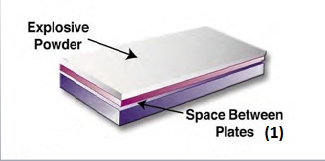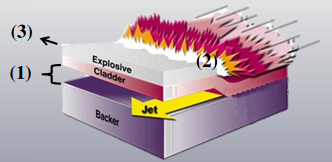The Processing of Titanium Clad Copper Parts
The Processing of Titanium Clad Copper Parts
1.Our process mainly includes explosion cladding and rolling.
Explosion cladding
2.Explosion cladding is a unique, robust technology for welding plates together using the energy of an explosive detonation.
Explosion cladding manufacturing
3.Explosion cladding manufacturing:
a.Pre-clad: Plain material inspection → Grind mating surfaces → Assembly (Backer & Cladder)

b.Pre cladding assembly

Cladding and Base Metal Plates are positioned parallel with a preset separation distance. Explosive is on top.
c.Cladding:

Detonation sweeps across the plate at ~2000m/sec (2 & 3);
Essential variables are:

d.Post-clad:

Flattening and Cutting → Testing and Inspection (Ultrasonic testing)
4.Rolling
5.Straightening → Machining → Polishing
Conclusion
Thank you for reading our article and we hope it can help you learn how to process titanium clad copper parts well. If you want to know more about titanium clad copper parts and other refractory metals and alloys, we would like to advise you to visit Stanford Advanced Materials (SAM) for more information.
Stanford Advanced Materials (SAM) is a worldwide supplier of titanium products and has over two decades of experience in the manufacture and sale of titanium products, offering high-quality titanium and titanium clad copper parts to meet customers' R&D and production needs. As such, we are confident that SAM will be your favorite titanium-clad copper parts supplier and business partner.









